For the 2025 school year, there are 3 public elementary schools serving 1,248 students in Macomb CUSD 185 School District. This district's average elementary testing ranking is 4/10, which is in the bottom 50% of public elementary schools in Illinois.
Public Elementary Schools in Macomb CUSD 185 School District have an average math proficiency score of 18% (versus the Illinois public elementary school average of 26%), and reading proficiency score of 23% (versus the 30% statewide average).
Minority enrollment is 30% of the student body (majority Black), which is less than the Illinois public elementary school average of 56% (majority Hispanic).
Overview
This School District
This State (IL)
# Schools
5 Schools
3,104 Schools
# Students
2,007 Students
1,223,907 Students
# Teachers
154 Teachers
89,922 Teachers
Student : Teacher Ratio
13:1
13:1
District Rank
Macomb CUSD 185 School District, which is ranked within the bottom 50% of all 844 school districts in Illinois (based off of combined math and reading proficiency testing data) for the 2020-2021 school year.
The school district's graduation rate of 80-84% has decreased from 90-94% over five school years.
Overall District Rank
#515 out of 852 school districts
(Bottom 50%)
(Bottom 50%)
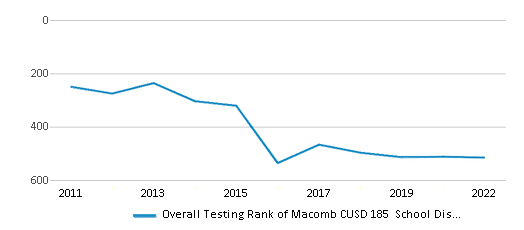
Math Test Scores (% Proficient)
(20-21)19%
28%
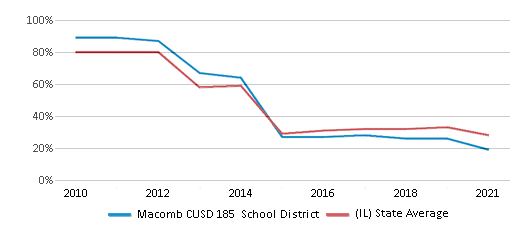
Reading/Language Arts Test Scores (% Proficient)
25%
30%
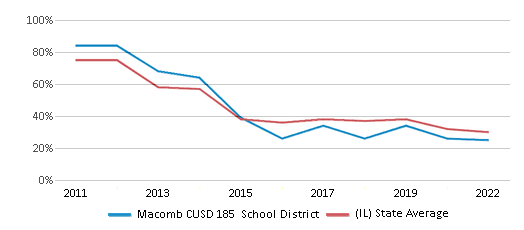
Science Test Scores (% Proficient)
50%
50%
Graduation Rate
80-84%
87%
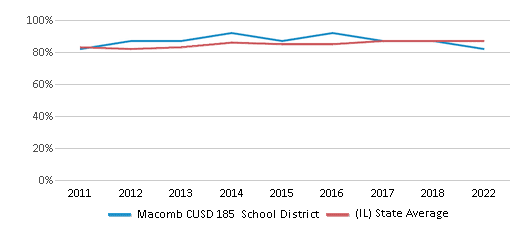
Students by Ethnicity:
Diversity Score
0.47
0.71
# American Indian Students
12 Students
2,875 Students
% American Indian Students
1%
1%
# Asian Students
47 Students
66,874 Students
% Asian Students
2%
6%
# Hispanic Students
92 Students
327,522 Students
% Hispanic Students
4%
27%
# Black Students
274 Students
200,526 Students
% Black Students
14%
17%
# White Students
1,425 Students
537,078 Students
% White Students
71%
44%
# Hawaiian Students
1 Student
1,010 Students
% Hawaiian Students
n/a
n/a
# Two or more races Students
156 Students
52,605 Students
% of Two or more races Students
8%
5%
Students by Grade:
# Students in PK Grade:
137
55,955
# Students in K Grade:
134
116,411
# Students in 1st Grade:
131
126,375
# Students in 2nd Grade:
145
167,370
# Students in 3rd Grade:
114
130,315
# Students in 4th Grade:
130
130,334
# Students in 5th Grade:
131
129,913
# Students in 6th Grade:
153
132,181
# Students in 7th Grade:
155
113,007
# Students in 8th Grade:
154
113,824
# Students in 9th Grade:
171
2,377
# Students in 10th Grade:
153
2,138
# Students in 11th Grade:
170
1,882
# Students in 12th Grade:
129
1,813
# Ungraded Students:
-
12
District Revenue and Spending
The revenue/student of $19,406 in this school district is less than the state median of $21,990. The school district revenue/student has stayed relatively flat over four school years.
The school district's spending/student of $20,242 is less than the state median of $21,244. The school district spending/student has stayed relatively flat over four school years.
Total Revenue
$39 MM
$41,381 MM
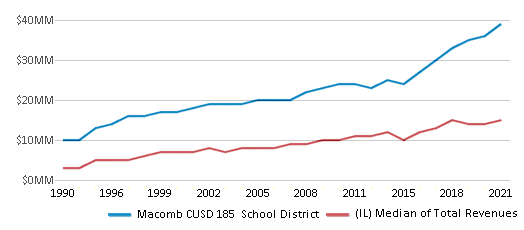
Spending
$41 MM
$39,976 MM

Revenue / Student
$19,406
$21,990
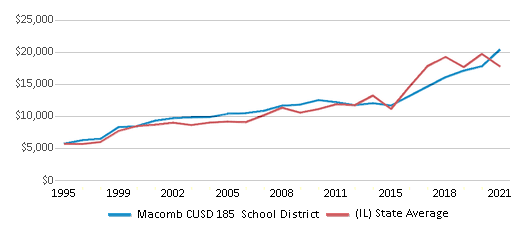
Spending / Student
$20,242
$21,244
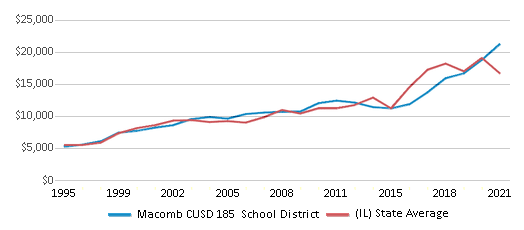
Best Macomb CUSD 185 School District Public Elementary Schools (2025)
School
(Math and Reading Proficiency)
(Math and Reading Proficiency)
Location
Grades
Students
Rank: #11.
Macomb Middle School
Rank:
6/
Top 50%10
1525 S Johnson St
Macomb, IL 61455
(309) 833-2074
Macomb, IL 61455
(309) 833-2074
Grades: 6-8
| 463 students
Rank: #22.
Edison Elementary School
Rank:
4/
Bottom 50%10
521 S Pearl St
Macomb, IL 61455
(309) 837-3993
Macomb, IL 61455
(309) 837-3993
Grades: 3-5
| 375 students
Rank: #33.
Lincoln Elementary School
Rank:
4/
Bottom 50%10
315 N Bonham St
Macomb, IL 61455
(309) 833-2095
Macomb, IL 61455
(309) 833-2095
Grades: K-2
| 410 students
Recent Articles

Year-Round Or Traditional Schedule?
Which is more appropriate for your child? A year-round attendance schedule or traditional schedule? We look at the pros and cons.

Why You Should Encourage Your Child to Join a Sports Team
Participating in team sports has a great many benefits for children, there is no doubt. In this article you will learn what those benefits are.

White Students are Now the Minority in U.S. Public Schools
Increasing birth rates among immigrant families from Asia and Central and South America, combined with lower birth rates among white families, means that for the first time in history, public school students in the United States are majority-minority. This shift in demographics poses difficulties for schools as they work to accommodate children of varying language abilities and socio-economic backgrounds.





